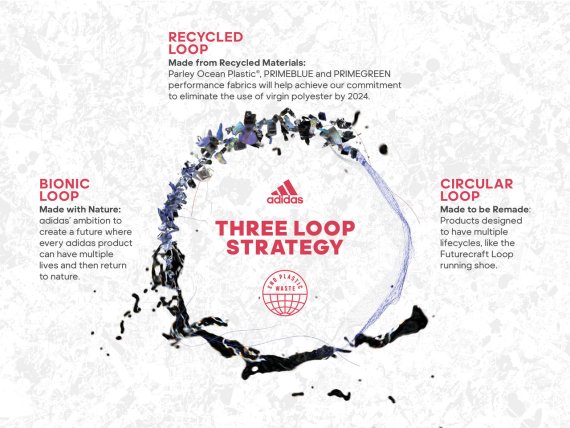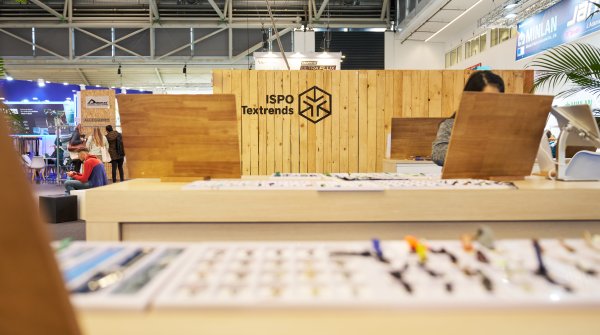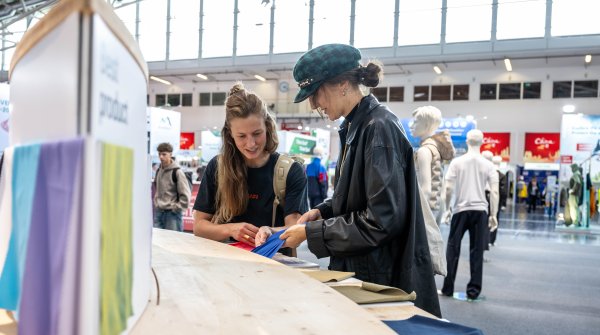
As a sports brand that relies on performance features, the team at Adidas believe that sustainability and performance go hand in hand. One doesn’t need to be sacrificed by the other. So, good news all round.
Whilst Adidas might not be in the winning position when it comes to global sales of competitive brands (rated number 3 globally by pledgesports.org), it is coming through as the leading light when it comes to future forward sustainable developments.
There is no denying plastic waste is a problem - and it has reached a tipping point. For every person on the planet, there is one ton of plastic and nearly 80 percent has become plastic waste wreaking havoc on the oceans around the world.
As a big company, Adidas admits it has been a big contributor to the problem. Which is why it believes its actions need to be equally as big. The brand has made a commitment to END PLASTIC WASTE through innovation and partnerships.

“We’re not just focused on changing how we do business; we're dedicated to changing how our industry does business,” said James Carnes, VP Brand Strategy. This is a valid point, as for the brand to proceed with their claims it isn’t a one sided affair, collaboration through the supply chain and the development of new partnerships is key in ensuring results.
Since 2012, adidas has innovated new products and processes with sustainability focused partners like Parley for the Oceans, Stella McCartney and the U.S. International Space Station. After introducing a single shoe at the United Nations in 2015, the long-term eco-innovation partnership with Parley for the Oceans is expected to lead to more than 15 million pairs of shoes being produced.
While most companies are looking to a single circular economy in closing the loop within their production process, Adidas’ commitment comes to life through a Three Loop Strategy, which focuses the brand’s efforts on creating three categories of sustainable products:

1. Recycled Loop
Made from Recycled Materials: Supported by the introduction this year of Primeblue (derived from Parley Ocean Plastic) and Primegreen, a performance fabric which contains no virgin plastic. These 100 percent recycled polyester performance fabrics are unique in being pure on the recycled content. Traditionally with recycled polyester an element of virgin polyester has been required. Today’s recycled polyester has developed that it is on par with the previously superior virgin offering.
2. Circular Loop
Made to be Remade: Products whose lifecycles continue after each use, like the Futurecraft Loop running shoe.
3. Bionic Loop – Made with Nature
Adidas’ ambition to create future where every adidas product can have multiple lives and then return to nature.
As the original sports brand, adidas continues to create only the best products for its athletes, and these sustainable products are no exception. All of these more sustainable products will meet or exceed all of Adidas’ elite performance standards. In the next decade the brand is committed to doing even more to end plastic waste.

2020: more than 50% of all the polyester adidas uses in products will be recycled
2021: adidas will work with adidas’ key US sports partners (MLS, NHL, USA Volleyball and the Power 5 NCAA football programs) to transition to more sustainable uniforms.
2024: adidas will use only recycled polyester in all adidas products across the business – aided by the introduction of Primeblue and Primegreen performance fabrics where 100% of the polyester used is recycled.
2030: adidas will reduce the company’s carbon footprint by 30 percent (as compared to 2017) as part of the Fashion Industry Charter for Climate Action.
2050: achieve climate neutrality. In Germany, the company already sources almost all its electricity from renewable sources.
Adidas’ products and processes will be a part of a new circular business model that includes extending the life of a product through rental, repair or re-commerce, being remade into new products and then ultimately returning to nature. Using materials that can be recycled multiple times, developed from natural resources or made from cells and proteins in a lab.
With these statements announced, it will be a matter of time if they prove true, but the dedication to reducing resources and eliminating plastic waste, guarantees that Adidas will be one of the brands accompanying ISPO on its journey of 50 Years of Tomorrow.
 ISPO TextrendsThese are the winners of ISPO Textrends Spring/Summer 2027
ISPO TextrendsThese are the winners of ISPO Textrends Spring/Summer 2027
- ISPO awards
- Mountain sports
- Bike
- Design
- Retail
- Fitness
- Health
- ISPO Job Market
- ISPO Munich
- ISPO Shanghai
- Running
- Brands
- Sustainability
- Olympia
- OutDoor
- Promotion
- Sports Business
- ISPO Textrends
- Triathlon
- Water sports
- Winter sports
- eSports
- SportsTech
- OutDoor by ISPO
- Heroes
- Transformation
- Sport Fashion
- Urban Culture
- Challenges of a CEO
- Trade fairs
- Sports
- Find the Balance
- Product reviews
- Newsletter Exclusive Area
- Magazine





